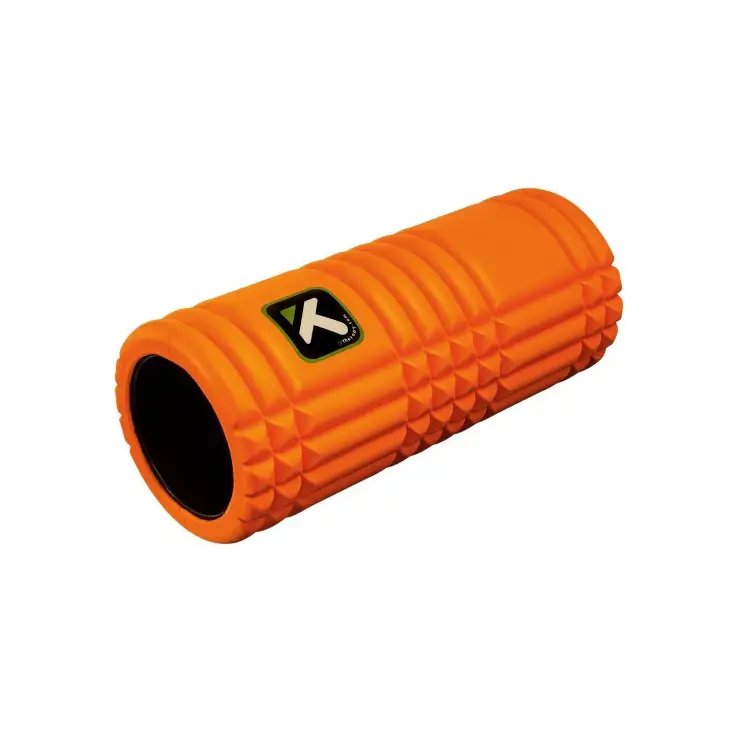Marathon Taper Tips And My 2 Week Marathon Taper Schedule
It’s just one week left before the big day – my first marathon. The first week of the taper has already passed and I’m getting more and more excited. I start to feel fresher and enjoy running again after a couple of long & hard weeks thanks to some of the marathon taper tips I’ll share below.
This weekend I’m in Moldova for my friends’ wedding. There are quite a lot of hills here in Chisinau, which is good for leg strength. However, I’m concerned it will be too much a week before the marathon.
Knowing that I wouldn’t have much time for running this weekend, I did my last long run already on Wednesday. The schedule this weekend is quite busy, so I plan to do a couple of 20-30 minute easy runs early in the morning.
Marathon taper tips
Taper is nothing more than the long-awaited period of complete recovery before the race.
It’s that part of the training plan when sessions are getting shorter, energy and mood improves and athletes are feeling strongest they’ve ever been. Magical time.

Marathon taper tips below are all about carefully balancing training volume, type, intensity, recovery and nutrition in the lead-up weeks to achieve the best condition for the race.
Taper tip #1 – be cautious during and after ‘peak weeks’
Prior to the taper there’s often a couple of, so-called ‘peak weeks’. That’s the most physically demanding and challenging part of the training plan.
The idea behind the combination of peaking and tapering is to push the body for extra 10% and ‘supercompensate’ to get into the best possible form before the race.
In marathon training peaking reflects the period of biggest volume and more time at race intensity. That’ more training load on top of an already demanding schedule. It’s kind of like a rite of passage that really tests the motivation behind.
During and after big and intense blocks of training the body is very vulnerable and prone to illnesses.
Due to the stress that is put on the body a lot of cortisol is produced and white blood cells are not able to fight infections as effectively. So, body’s immune system is very weakened and it’s very easy to fall ill and compromise the whole training process.
So, take extra care to avoid infections. Dress warm, avoid harsh temperature changes, wash hands at every opportunity. Also, if possible, stay away from crowded places where the risk of catching a cold is high (like public transport, crowded shops, etc.).
Taper tip #2 – how to train in the weeks before a marathon?
A taper for a marathon is usually 2 weeks long and includes gradual decrease in training volume. Intensity, however, should remain high until several days out from the race.
Even though the volume of running is going down it’s important not to spent all that extra time on the couch. Passive rest does not promote recovery and may result in tighter muscles. In the weeks leading up to the race it’s best to add mobility sessions to relieve and prevent any tightness.
Also, as the body recovers from intense training, athletes start to feel fast and strong again (finally). It’s natural to be curious and to test yourself with harder or longer efforts during sessions. Don’t do it – stick to the training plan and have faith in it. Save that ‘extra’ for the race.
Volume
The best way to approach a taper is to progressively decrease the duration of sessions and intervals every week. Cut the total volume by 30% in the first week of the taper and by another 50% in the race week. The last long run should be no later than 1 week before the race and no longer than 1 hour.
During the race week it’s best to focus on shorter sessions (30 to 40 minutes) to avoid accumulating fatigue. 1-2 days before the race 20 minute run with some strides is enough.
I like to take a rest day 2 days before the race and do a short 20 minute jog with some easy drills and short strides at race intensity.

The Resilient Athlete
A Self-Coaching Guide to Next Level Performance in Sports & Life
Are you aiming to become a resilient athlete who is able to withstand any pressure? Be able to jump on any opportunity? Take any challenge life throws at you head on?
Then this book is for you.
Learn moreIntensity
It’s very important to keep the intensity during these recovery weeks. Shorter intervals at race speed and above help to sustain muscle economy by triggering hormone release and mitochondrial growth.
They say you can’t train anything new in the last week, but you can really sacrifice what you gained by overdoing it. And that’s really true. Shorter intervals will give the body more time to recover and will protect from accumulating muscle fatigue and losing endurance gains.
Tempo efforts. The best strategy for longer marathon pace efforts is to also cut the interval time by 30% in the first week and by 50% in the second week. So, a 20 minute tempo effort will become a 14 minute effort 2 weeks out and a 7 minute effort on race week.
If the tempo effort is longer it’s best to make it a ‘broken tempo’ and add a 5 minute recovery period in it. So, a 40 minute tempo effort becomes 2×14 minutes with 5 minute rest in the first week and 2×7 minutes with 5 minute rest in the second week.
Speed work. Same here – two weeks out it’s best to cut the interval time by 30% and on race week by another 50%. Adding an extra minute or two to recovery time will also help to recover faster. At this point intervals are only for maintaining the power – not building it – anyway.
One of the most effective marathon taper tips is to substitute speed work on race week with a 10×1 minute marathon pace fartlek session (1 minute at marathon pace, 1 minute easy).
Taper tip #3 – what to eat a week before a marathon?
Marathon taper is the time to eat well. After all the hard training is done it’s critical to recover as fast as possible and heal micro-traumas caused by hard and extensive running.
Good nutrition for endurance athletes is about minimizing the overall inflammation in the body. Providing the body with as much vitamins and minerals as possible will help to normalize internal processes, improve sleep and speed up recovery.
Related: 14 Key Steps To An Effective Marathoner And Triathlete Diet
As the volume of training goes down during the taper, it’s a good idea to slightly decrease the amount of calories. With extensive training it’s easy to get used to eating a lot, but as the volume eases off it’s also easy to put on extra weight that will slow you down.

Carb-loading. Fueling for a race should be spread throughout the final 2-3 days. Not one ‘pasta party’ the evening before the marathon. A good approach is to progressively increase the amount of carbs over the last 3 days to approximately 8-10 grams of carbs per kilogram of body weight on the day before.
It’s important to spread out the food evenly throughout the day and have the last meal by 6 p.m. Over-eating in the evenings will require too much energy for digestion and will cause bad sleep.
Race morning. I usually have a solid breakfast of oatmeal and some bread with jam. Nothing too big and with minimum fiber to avoid stomach problems during the race. Generally, around 600 calories.
Also, after all the warm up is done, 20 minutes before the start I also eat a gel that’s about 20 grams of carbs. This tops up glycogen reserves after the warm up.
Taper tip #4 – what to do a week before the marathon?
Race week can feel a bit weird, as there’s not much training to do. To avoid filling free time with more running, it’s wise to spend extra time focusing on organizational things.
Devote some time organizing race logistics. What time to wake up and what to eat for breakfast. Plan what to wear for the race and for the warm up and pack more than one option for different weather conditions. Decide when to leave for the start and when to do the warm up. Having a plan on race day removes a lot of stress.
Early in the week it’s a good idea to get a light massage appointment. It will help to remove tightness in the muscles, which will promote blood flow. A long massage will be too stressful for the body and might get muscles fatigued more.
Easy foam rolling and self-massage are both good alternative to traditional massage and are great for tapering too.
Final days before the marathon is the best time to plan or review the pacing and nutrition strategy. What and when will you take in fuel, how much you need. How hard will you run and when (and if) you’ll pick up the pace.
Personally, I am still concern about how to pace the race. I feel certain I can finish, but what speed or effort I should maintain and when I’m not sure. In my first half marathon last year I ran several beats below my lactate threshold and faded towards the end.
Obviously, marathon is much longer and I will have to run slower. I just don’t want to run too slow to regret it in the end.
Did you find this information useful? Share the post with others using the buttons below.
My first marathon training update
Update: I ran my first marathon and it was a roller coaster of emotions. Read my race report here, if you’re interested.
Last month I was concerned about my long run and how I would feel running longer than 2 hours. A couple of weeks ago I did a 30K run and tested some of the gels I will use during the race. That was my longest training session to date and marked the end of the peaking period.
It went surprisingly well and even a 30min interval at marathon pace towards the end of the run didn’t feel that hard at all.
So, my nutrition plan for the race is to take a gel every 40 minutes or so. That sums up to around 35-40 grams of carbs per hour.
As for the speed sessions, I’ve substituted my 1K interval sessions at 70-80% with 400 meters at 90% in the past weeks. These fast sessions I do with very long rest (about 5 minutes) and am feeling quite good the next day.
Overall, I find this blog very good at keeping me focused on the goal. It forces me to analyze the process, put things into perspective and understand what am I missing along the way. Besides that, I started looking at my training program from the fatigue perspective and not from ‘what I need to do’ angle. Evaluating every month what has gone right and where I am really helps me to see how I respond to training and what works best.
Also, writing these marathon taper tips made me re-think what’s important this week and keep my attention on the race.
My 2 week marathon taper schedule
Throughout the taper I’m gradually cutting the volume to give my legs recovery they need. I even added a couple of extra rest days to be on the safe side. Also, as shared above, I still keep the same intensity during my tempo and speed sessions.
I’m stepping down from a 70k/week that I did in the ‘peak’ period. Below is my 2 week marathon taper schedule.
2 weeks before the marathon. Total volume ~50K (down by 30%). That included a 1:00 hour long run, a tempo session, some 1.5 minute intervals and some easy runs.
Marathon week. My plan is to run ~30K (down by 40%, not including the race). Intensity-wise I will include only one short fartlek session. Remaining time I’ll run 20-30 minute sessions with short marathon pace speed pick ups.
Have an opinion? Share via links below and tag @theathleteblog
Tags In
Andrejs Birjukovs
GET A FREE TRAINING PLAN
Subscribe to my email list and get access to a free 4-week “back in shape” training plan
You’ll also get two full-body strength sessions and some other goodies!

How did I get here?
Hey there! My name is Andrejs and I am here to inspire, entertain and get you fit for any adventure.
I went from being an over trained pro athlete to an endurance coach sharing how to listen to your body and live life to the fullest.
Traveling, new sports & activities brought new meaning to my training and made it much more effective, fun and enjoyable. And I'm here to help you do the same.



